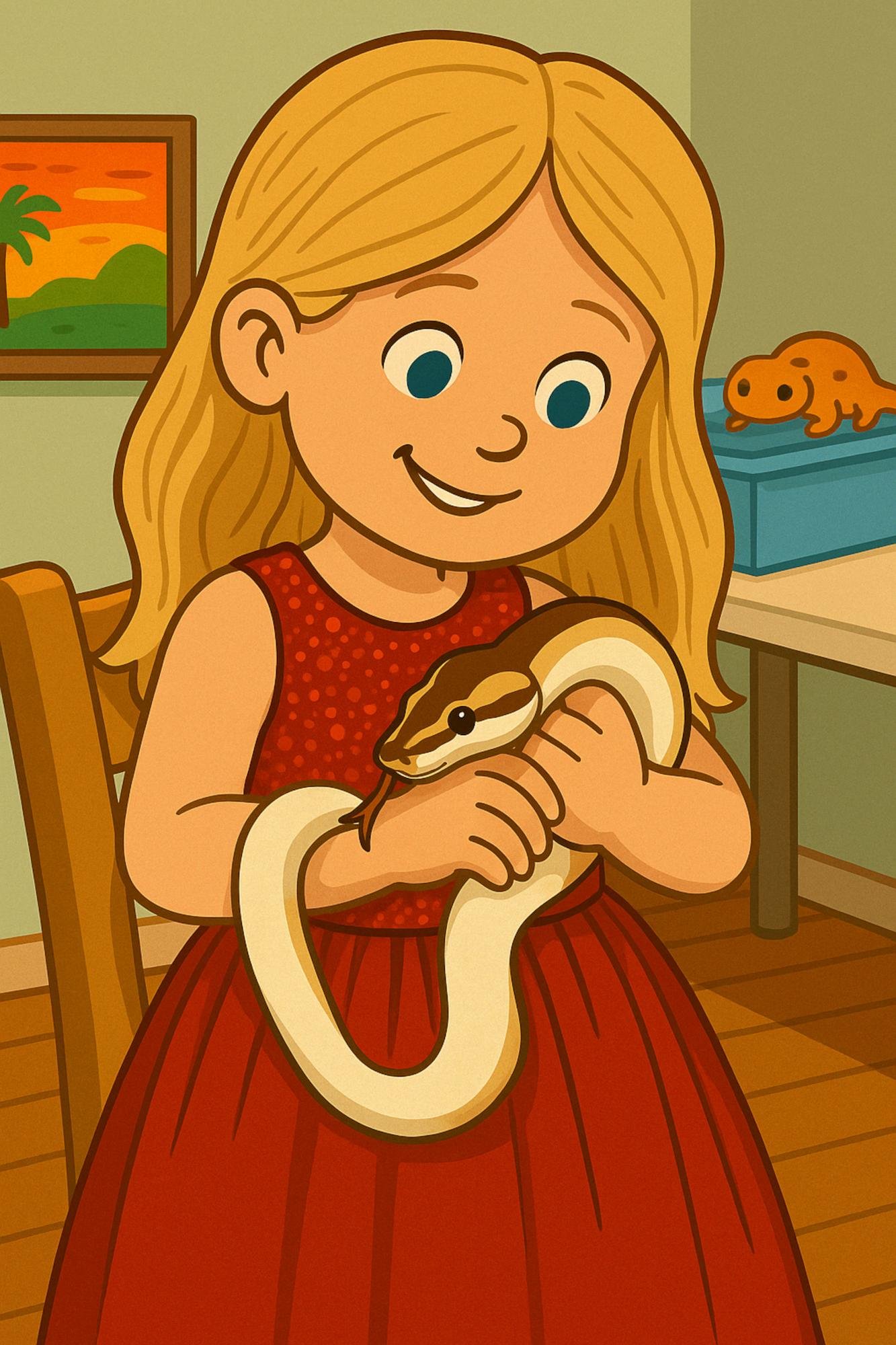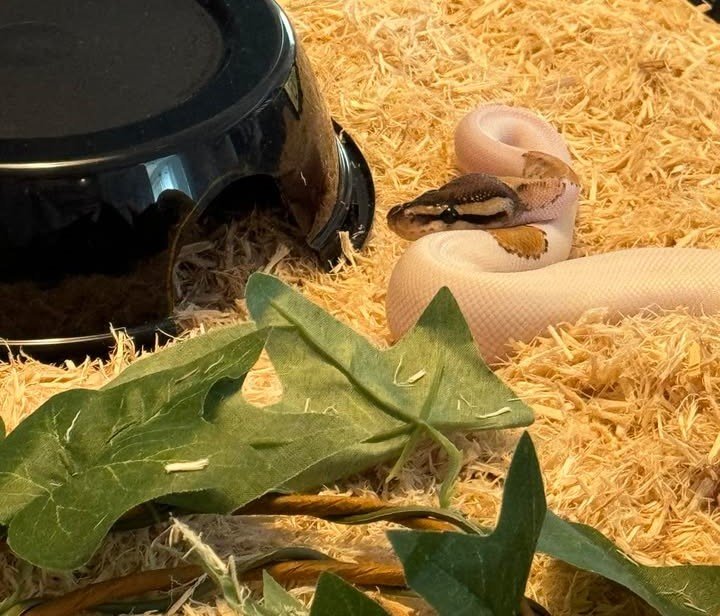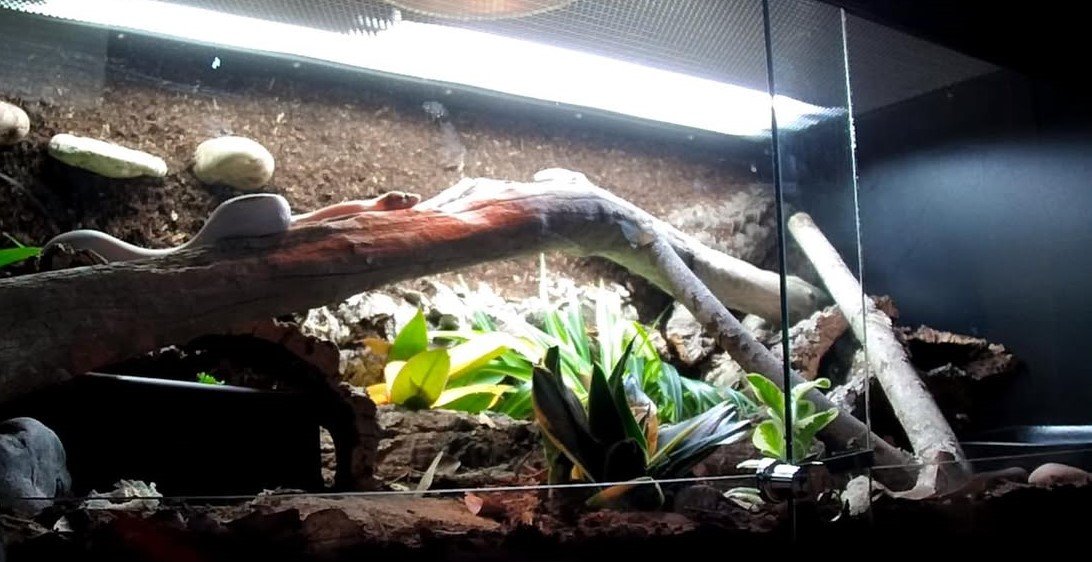The Journey of Overcoming Fear: A Ball Python Tale
Let’s face it—when most people think of getting a pet, they envision something furry, fluffy, or at least capable of making goofy faces. Snakes? Not exactly high on the list for many families. In our household, Dad was firmly in the “no thanks” camp, thanks to a mid-90s teenage trauma involving a boa constrictor, an escape mission, and an unfortunate encounter behind a Monopoly board. Suffice it to say, that snake taught him the meaning of “strike first ask questions later.” Fast forward a few decades, and something wild happened. Dad caved. But let’s rewind a bit.
The Ball Python: The “Pet Rock” of the Snake World
Before Dad was ready to reenter the snake world, he dove headfirst into research. After all, if he was going to be outnumbered by the family snake enthusiasts, he at least wanted to pick one he could handle. Enter the ball python—a.k.a. the low-maintenance “pet rock” of snakes. These docile “noodles” are famous for their tendency to curl up in a tight ball when stressed (hence the name) rather than lunge out to take nibble. It was a far cry from his boa babysitting fiasco, and for Dad, it was the only kind of “nope rope” he was willing to entertain. Despite all his research he was not quite ready to invite the mascot from the House of Slytherin into the family just yet.
A Fateful Trip to the Reptile Show
The story really took off one April afternoon at a local reptile show in Rhode Island. We stumbled upon a Connecticut breeder called Picture It Pythons, and honestly? Their booth was unforgettable. The family behind Picture It Pythons was as friendly as they were knowledgeable, and their collection of ball pythons was nothing short of stunning. They also had a knack for snapping some of the most beautiful snake photography we’d ever seen—seriously, who knew snakes could look so majestic?
While we didn’t leave the show with a snake that day, the seed had been planted. As Mom’s birthday rolled around, Dad made the bold decision to revisit the idea of adding a scaly, slithery friend to the family. This time, he hyped himself up enough to schedule a visit to Picture It Pythons to view their collection.
Meeting Cosmo
Picture this: it’s Mom’s birthday, and instead of the usual dinner-and-a-cake routine, we’re in a room filled with colorful, slithery creatures. To Dad’s credit, he didn’t bolt. In fact, it was here that we found the one. A piebald, enchi, mystic (with a possible orange dream) ball python who immediately stole our hearts.
If you’re scratching your head at all those fancy words, you’re not alone. Ball python genetics have become something of a science experiment over the years. Originally, ball pythons were just a variation black or dark brown with light brown or tan blotches on their sides and back. These are the snakes you might see in the wild. But thanks to breeders experimenting with genetics, they now come in a kaleidoscope of patterns and colors, ranging from the high-contrast piebald (think mostly white with “paint splatters”) to the vibrant, dreamlike hues of morphs like orange dream and enchi. Cosmo is basically a Picasso painting wrapped up in a snake body.
Oh, and the name? Kiley wasted no time in dubbing him Cosmo, inspired by the whimsical “Fairly OddParents” cartoon. It was fitting—he’s colorful, quirky, and magical to look at.
From Snake Skeptic to Snake Dad
Bringing Cosmo home was a big deal for all of us, especially Dad. What started as a childhood fear turned into a journey of discovery, patience, and maybe even a little bravery. Cosmo isn’t just a snake; he’s a symbol of overcoming fears and embracing the unknown.
And while Dad might never love the idea of snakes darting out from behind Monopoly boards, he’s become surprisingly fond of his new, slithery family member. Who knew? In making it his mission to upkeep all the reptile’s husbandry, Dad has often picked up Cosmo to move things around in his enclosure without even realizing he’s holding what he used to consider a “Danger Noodle”
.
In the meantime, Cosmo’s content being the center of attention—and maybe, just maybe, the rock-solid pet Dad always wanted. Get it? Pet Rock, rock solid pet? Yea Dad also has horrible dad jokes.
Heat and Light: Ball Pythons are native to various regions in Africa. This means heat and humidity requirements are fairly high. We utilize an Arcadia 50W DHP and an Arcadia 75W Halogen, both on dimming thermostats to maintain around 90 degrees on the warm side, and 75-80 degrees on the cool side. We spray the enclosure down each day to maintain 50-70% humidity. NOTE: When Cosmo is in shed, we bump the humidity up 70-80% to assist with a clean shed. Along with heat we provide an Arcadia Forest 6% UVB, and a 6500 Lumen LED for the plants benefit.
Diet: Currently Cosmo enjoys a large frozen thawed mouse once a week. You want to stay away from live food as it has a chance to injure the snake, although they feast on live prey in the wild. Frozen thawed is a bit more ethical and safer for your animal, not to mention saving you money on expensive vet bills if a live feeding goes wrong and the snake does get injured.
Tank Size: Cosmo started off in a small, lockable, 12-quart tub with air holes drilled into the sides and an under-tank heat mat on a dimmable thermostat. As babies you want to keep their enclosure somewhat small with plenty of clutter and hides to make them feel safe. Today Cosmo is now in a fully Bioactive 4x2x2 enclosure and will most likely remain in this habitat for quite a while.
Substrate: While in his tub we used Aspen bedding, although it was not so great on retaining a good humidity level. To counter that we kept his water bowl full and created a few humid hides with damp sphagnum moss. In his Bioactive enclosure we use the Biodude's Terra Sahara, which helps maintain the humidity at the levels they desire.
Tank Décor: We went with a full Ball Python Bioactive Kit from The Bio Dude, which included the substrate, various plants, and cork bark. We found a nice, just about 4-foot long, piece of driftwood at the beach and we added it across the middle as something he can climb and bask on. We also added some nice smooth river rocks in various spots to help hold up the plants. Ball Pythons can grow between 4-6 feet in length and be a bit smashing on plants. He does have a couple of generic medium size reptile hides, one on each side, that helps ensure he can maintain his desired temperature range - basically warm side at night and cool side during the day.
Great Resources:
Bioactive Supplies – The Bio Dude or NEHERP.
Care Guides - ReptiFiles and Bob Bledsoe's Green Room Pythons.




